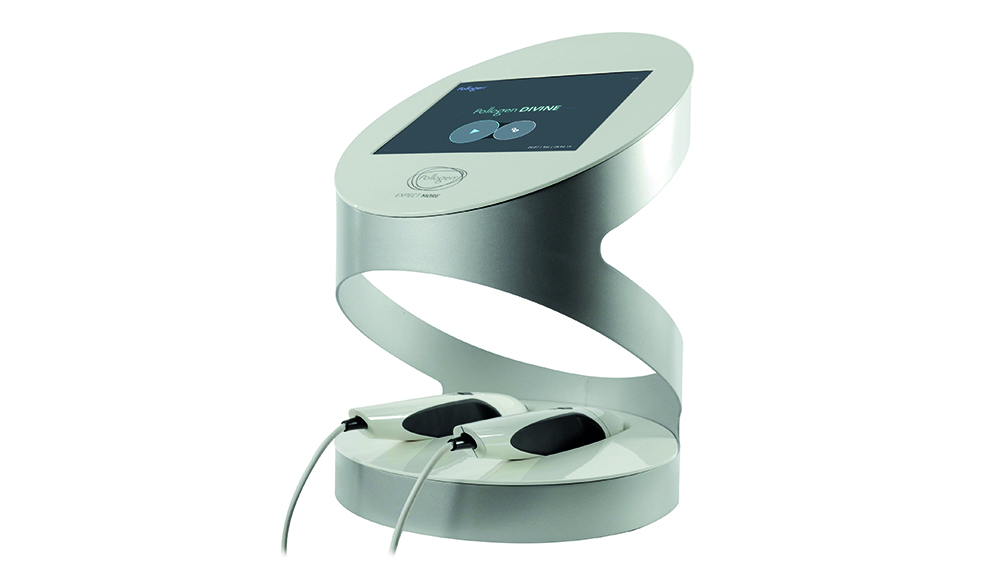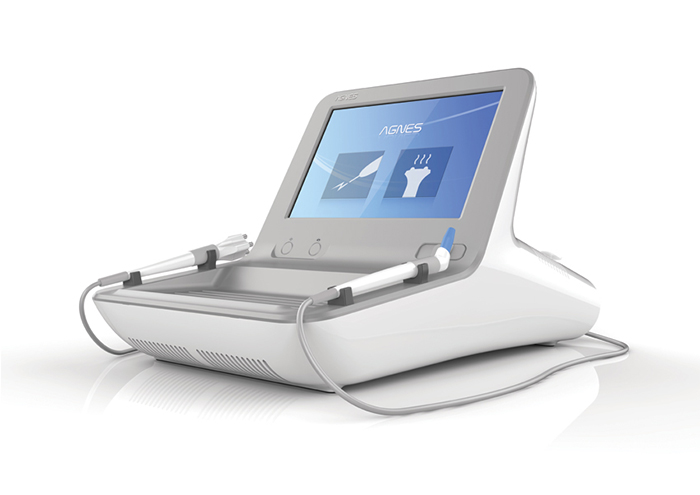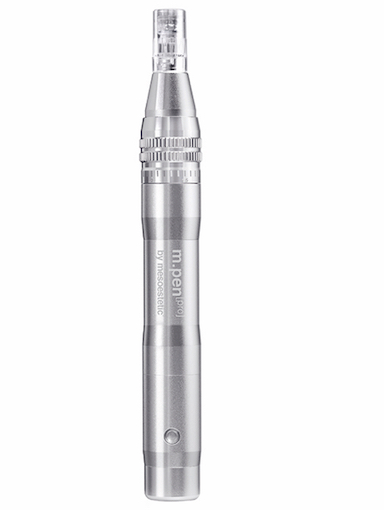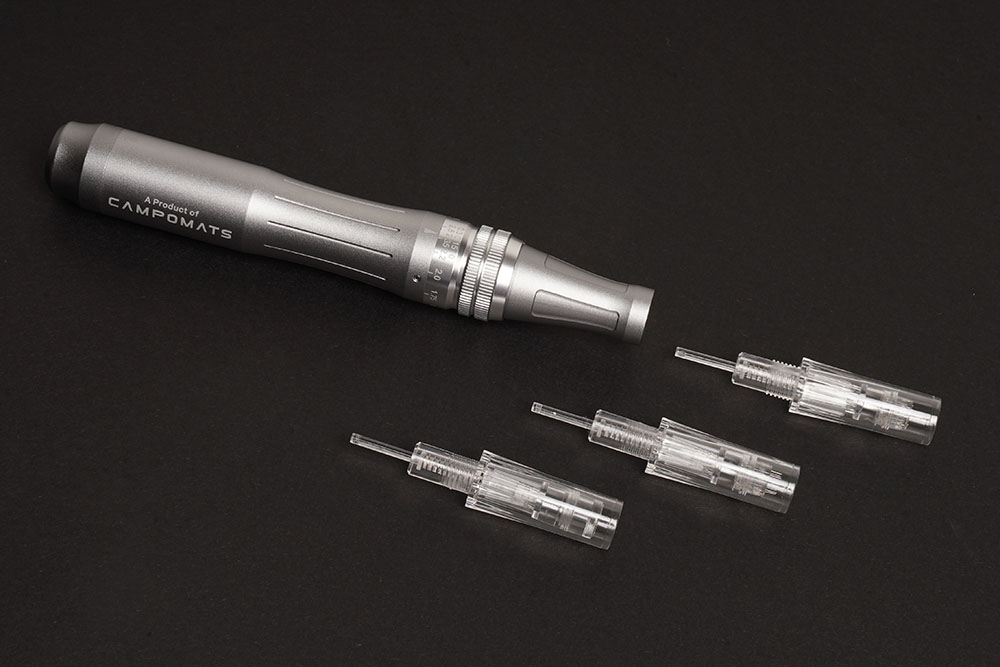Microneedling: everything you need to know

In the past two months, microneedling has boomed in popularity on beauty booking site Treatwell, and compared to pre-covid figures, there’s been a 120% increase in bookings for the service (May-June 2021 versus May-June 2019).
With those kinds of stats, it seems silly not to offer the aesthetic treatment in your salon or spa. But why is microneedling loved so much by clients, as well as A-listers such as model Naomi Campbell?
What is microneedling?
Microneedling uses small sterile needles, either attached to a handheld stamping device or on a roller, to make micro-injuries in the skin. These small wounds kick the skin’s natural healing process into gear, which stimulates collagen production in the dermis, making it ideal for clients with skin laxity who want a plumper complexion.
However, it’s not only a treatment of choice for firmer, smoother skin, it can also reduce scarring and pigmentation and make pores appear smaller. “Over the past year, I’ve noticed a big client shift towards rejuvenation in the aesthetic market,” says cosmetic doctor Dr Bejma, founder of Dr Bejma Medical Clinic in Leeds.
“I believe this is due to the coronavirus pandemic. Clients are now seeking ways to keep themselves looking young and fresh, with many people deviating from fillers and anti-wrinkle injections.”
Microneedling can also be performed on the body, with everywhere from the neck and décolletége, to the upper arms, thighs, buttocks and stomach area suitable for the non-invasive treatment.
What are the skincare benefits of microneedling?
Not only does microneedling offer an impressive bevvy of results, but the micro-injuries created by the needles allow skincare products to penetrate deeper through the micro-channels you’ve created in the skin, meaning all those actives you’ve applied will have better absorption.
“Microneedling allows vital skincare ingredients to reach deeper layers of the skin, enhancing the benefits of topical products to achieve better results,” explains Clare Muir, director of education at the International Institute for Anti-Ageing (IIAA), which distributes skincare range Environ.
“The tiny holes that are made in the skin while microneedling are many times larger than the molecules that need to get through into the epidermis, so these ingredients literally fall through into the deeper layers of the epidermis. The higher the levels of vitamin A and C we can get into the lower layers of the epidermis, the more collagen can be made.”
What needle depths should I use?
Many microneedling devices offer adjustable needle depths because in treatment you will work at a different depth on different areas of the face, depending on the concern you’re addressing. For example, on the lower face, cheeks and jawline you might work deeper, while on the forehead, you would go less deep. “For skin rejuvenation and epidermal thickening, a needle length of up to 0.6mm is enough. However, for acne scarring and stretch marks, a deeper needle length is required – anywhere between 1.0mm and 1.5mm is optimum as you’re remodeling collagen deeper down,” explains Claire Williams, founder of the WOW Facial, which includes microneedling as a step.
“For hyperpigmentation, you need to treat the base of the epidermis, so a smaller needle depth is perfect, while for oily complexions, open pores and acne inflammation I’d advise using a longer needle depth.”
When it comes to the training needed to use each needle depth, guidelines from the Cosmetic Practice Standards Authority state that Level 4 training is recommended for up to 0.5mm; Level 5 for up to 1mm; and Level 6 training is recommended for up to 1.5mm on the face or 2mm on the body. At Level 6, clinical oversight is also recommended for non-medical professionals.
Who would be suitable for a microneedling treatment?
Microneedling is popular among clients because it’s a less abrasive treatment than lasers and chemical peels, with minimal downtime – usually, clients will have a little bit of redness for 24–48 hours afterwards. The treatment is fast too, taking between 30–60 minutes depending on the area treated, and the results can be seen from four to six weeks. It’s the ultra-fast treatment length that makes microneedling a no-brainer for beauty therapists too. It’s cost-effective, as it takes so little time to perform, and clients are consistently impressed with the results.
“The results are long lasting and can offer a really good return on investment for beauty therapists,” explains Williams. “Microneedling is so versatile; therapists can offer clients the option to improve a variety of skin conditions, so the device is a good all-rounder.”
Although microneedling is relatively safe, there are contraindications. “Patients with active skin conditions such as acne and acute chronic skin disease should wait until it’s settled; pregnant women and those breastfeeding should avoid microneedling altogether; and clients with previous keloid scarring, patients on anti-coagulants, and those currently undergoing chemotherapy and radiotherapy would be contraindicated,” says Rebecca Denham, UK director at Fillmed.
Which technologies can I combine with microneedling?
Another appeal of microneedling is how nicely it works with other technologies, in particularly radiofrequency (RF). As we know, microneedling creates a micro-injury in the skin which stimulates the healing response, while RF uses heat to shrink wrap and tighten the skin, resulting in a tighter and firmer complexion.
Microneedling also works well with light-emitting diode (LED) skin treatments because LED light is proven to stimulate cellular activity, encouraging further collagen production. “Red LED light post-microneedling can increase fibroblast activity by up to 200% for 24 hours post-treatment, which aids in the healing of skin and gives an extra glow,” explains Williams.
Pairing a chemical peel with microneedling is also favoured when working on acne, pigmentation or skin rejuvenation “as performing a gentle peel before microneedling can enhance results”, adds Williams. Electroporation is also a good friend to microneedling as combining the two takes the treatment’s rejuvenating powers to the next level because both result in better absorption of topical products. When they are combined, ingredients can reach a deeper dermal level for even better results.
What are some of the leading microneedling devices?
[Sponsored content]
Advanced Esthetics Solutions Divine Pro

Divine Pro works via a synergised treatment of Pollogen’s patent technology Voluderm, a fractional two-step thermal ablation process using up to 100 radiofrequency-assisted ultra-thin electrodes to deliver a comfortable treatment. This new generation of microneedling works on the process of generating micro-wounds through thermal ablation, where each individual needle delivers radiofrequency in both the epidermis and dermis without the risk of post-inflammatory hyperpigmentation and scars.
Price: £27,250
029 2023 1228 advancedestheticssolutions.co.uk
Harley Technologies Agnes RF

Agnes RF is a precision Radio Frequency (RF) device that utilises RF energy for tissue coagulation and electro thermolysis. Using micro-insulated needles to penetrate the skin at specific points, distributing radiofrequency energy at precise temperatures to generate a tissue response without damaging the epidermis. Effective in treating Facial Sculpting and Symmetry, Submental Fat Reduction, Jowl Shaping and Tightening, Periorbital Wrinkle Reduction, Eye Bag Reduction and much more.
Price: £24,950
0800 702 2664 harleytechnologies.co.uk
Mesoestetic M.Pen Pro

The cordless handheld device allows therapists to work at different speeds and depths, depending on the needs of the client, to deliver greater results. It’s been designed to work with the brand’s C.prof ampoule solutions to drive the product deeper, boosting the actions of these substances, and the device’s movement is automatic and perpendicular to the skin, contributing to its recovery.
Price: on application
01625 529 540 mesoestetic.co.uk
L'Aesthetic 1NEED

1NEED is the exclusive CE marked Class IIB Medical Device with wireless operation and technology. With three different types of cartridges and various protocols, the device is ideal for conveying active ingredients under the dermis, toning and rejuvenating skin and treating blemishes, signs of age, hyperpigmentation, acne scars and keloids. Also suitable for the improvement of expression lines and deep wrinkles, stimulation of cell renewal, collagen activation and more.
Trade price: £950 +VAT with limited offer till end of August for £750 +VAT
0345 676 9733 laesthetic.co.uk


